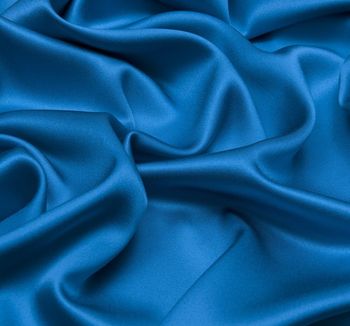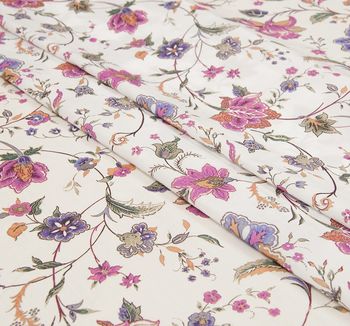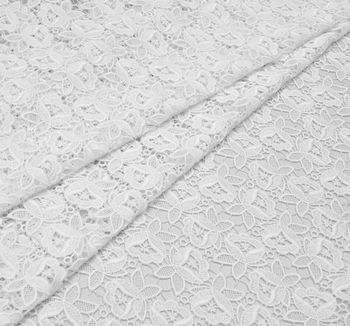Silk is a timelessly trendy natural fabric woven from the cocoons of silk worms. The world’s most famous fashion brands regularly apply it for various men’s and women’s outfits earning the admiration of the audience.
Suiting Fabrics – The Men's Guide to Selecting
Men’s suiting fabrics are used for suits, jackets, vests and trousers. Woven of wool, cotton, linen, etc., they are ranked among the most popular fabrics when it comes to building a man’s wardrobe. Deciding which suiting fabric is best to buy is not easy, given all this variety of options we are presented with. It actually depends on many factors, such as your age, status, purpose and income.
Fabrics of that type come in a number of weights and patterns. They differ in breathability, softness, lustre, thickness and thread count. There are summer weights perfect for warmer seasons, as well as denser fabrics ideal for autumn/winter.
The collection of suiting wool fabrics at Tissura
Let’s have a look at the range of fabrics one can make a suit of.
Types of Suiting Fabrics
The perfect suit starts with picking the right fabric. You also need a professional tailor to get a custom two or three-piece outfit that will fit your body shape. Still, the first step is to find the ideal suit cloth, and there are many options one can tap into.
What are the types of fibers commonly found in fabrics for men’s suits?
|
Type |
Properties |
Best For |
||||
|---|---|---|---|---|---|---|
|
Wool |
A number-one choice for suits. Natural, breathable, absorbing, it makes all kinds of jackets and trousers – from lightweight to heavy. Apart from merino wool, there are also other types of wool used in suit materials. |
Formal and casual suits and vests, with the weight depending on the season. Durable and water resistant, worsted wool is ideal for jackets and trousers in temperate climates. |
||||
|
Cotton |
Another handsome option for suits to be worn in hot and humid climates. Cotton is cheaper than wool and is low-maintenance. Cotton suits can be pressed to give sharp creases in the legs. |
Lightweight suits for warmer weather. Ideal for travelling purposes, since they can be quickly ironed to perfection if creased. |
||||
|
Linen |
Popular in continental Europe, linen suits dry faster than wool and cotton ones. This fiber wrinkles much, but is ok with pressing. |
Casual suits for summer, perfect for a relaxed event. Linen fabrics tend to be softer and suppler compared to cotton cloths. |
||||
| Silk | Silk suits are often chosen by businessmen from the Middle East and Asia. Silk suiting fabrics are smooth, fine and lightweight. They require much attention in terms of care. | Luxury suits for special events and hot climates. Though not the commonest choice when it comes to suitings, silk can be used to line a suit. | ||||
| Velvet | Not exactly a fiber, it is rather a type of fabric usually made of cotton, silk, or viscose. Velvet has a striking appearance. Its unique texture makes it an ideal formal event option. | Exquisite jackets, vests, tuxedos and suits for red carpet events, gala ceremonies, etc. Men usually buy cotton velvet, while women use both cotton and silk/viscose variations. | ||||
|
Cashmere |
Soft, silky and lightweight, cashmere yarn is probably the best thing you can have next to your skin. Available in pure form and in blends, it belongs to the luxury segment. |
Cashmere might not be the right option for trousers given its softness and pliable nature, but it makes wonderful jackets ideal both for work and casual events. |
||||
Men’s suit fabrics are constructed in various weights and weaves. The suit – whether a two-piece or a waistcoat thing – is a gentleman’s pride; it’s a piece of clothing that speaks volumes about one’s style and taste. Whatever fabric you choose, it’s crucial to find an expert pair of hands to entrust it to, because even the best quality suiting fabric can be ruined by an unskilled tailor.
Wool is the most popular suit fabric and one of the most versatile. It can be worn both in colder and warmer climates. It can be silky smooth, soft or wiry. It can be plain or patterned. In general, wool is ideal for business jackets and trousers because it feels nice to the skin and wears well. High quality wool fabrics are known for:
- Warmth — air pockets in wool threads trap heat and make you feel warm and cozy.
- Durability — wool fibers are strong and resilient, so wool fabrics wear out slowly.
- Lustre — wool fabrics have a natural lustre, especially worsted wool cloths.
- Drape — wool cloth drapes well and tends to remember the shape of the body it is worn on.
.jpg)
Most fine suits are made of worsted wool, i.e. the wool that has been carded and combed to remove short fibers. Such fabrics are classified as Super 100’s, Super 120’s, Super 180’s, etc. The higher the number, the finer the cloth you get. Nowadays, there are even Super 250’s worsted wool fabrics available, and they are the utmost luxury a gentleman can add to his special occasion wardrobe.
While worsted wools can be worn all year round, some of its varieties are more suitable for hotter weather. E.g., tropical is a plain weave made with merino wool and sometimes mohair fibers.
One of the best ideas for a fall/winter suit is flannel. What sets it apart from other wool fabrics is the distinctive fuzzy texture. It is very soft and warm and can be quite heavy. The flannel suit is highly adaptive; it looks great in the office, on casual and formal events. A lot depends on the color, as well as on the items you pair it with.
Another classic choice for men’s suits is wool tweed fabric. Woven in earthy tones, it is highly durable and comfortable. A tweed three-piece is a perfect pick for formal occasions, including weddings, but it can also be worn separately for a casual look.
Popular Weaves and Patterns for Men’s Suits
To create a cloth, one should interweave threads in one way or another. There are several kinds of weaves commonly found in suit fabrics.
- Plain weave – for strong and durable fabrics identical on both sides.
- Twill weave – a broad family of weaves with a diagonal pattern. Among them are:
- Herringbone – a variant of broken twill.
- Houndstooth – a specific kind of twill, also known as ‘dogstooth’ and ‘pied-de-poule’.
- Sharkskin – a type of twill weave, also known as ‘pick/pick’.
- Seersucker – for slightly puckered fabrics with a two-color stripe pattern, made of cotton.
The universe of men’s fabrics incorporates lots of colors and designs. Apart from herringbone, sharkskin and houndstooth, one can choose any kind of stripe and check.
.jpg)
Suit stripes are always vertical and may vary in width and color. The most formal one is pinstripe, which is usually white or grey. Chalk stripes are slightly wider and have a more casual vibe.
Checks are also versatile. Plaid, or tartan patterns are formed with crossing multi-colored bands. Ideal for blazers and casual jackets, they are still associated with Scottish clans. Glen check, also known as Prince of Wales check, is probably the most popular type which looks great both in jackets and in trousers. Large windowpane checks are quite bold and most suitable for sports jackets, although confident men can also choose them to make a statement.
There are three suit styles: British (or English), Italian and American. The classic British style is very masculine and structured, and is associated with heavier fabrics. The Italian one is less structured, more casual and fitted. The American style implies looser fit, low armholes and wide trousers.
How to Choose the Right Suiting Fabric?
There are two ways to get a suit: either buy a ready-made outfit in a shop, or find a tailor and have it sewn for you. A custom suit might be quite pricey, but it will be an exact fit for your frame, and you get to choose the type of fabric you want to wear.
-Panorama2.jpg)
There are several key things to remember when selecting a fabric for a future suit.
First, decide on the type of fiber which works best for you. Cotton and linen are recommended for summertime, since they are highly breathable and water absorbent. Tropical weight wool is also a great choice for warm climates.
Second, choose the weave and the pattern. Twill weaves are more durable compared to plain ones, but the latter are still the suiting standard. If you plan to wear your suit a lot, as well as sit in a chair, opt for crease-resistant types of fabrics such as flannel or worsted wool.
The choice of colors and patterns depends on the occasion a suit is made for. Is it for formal events only? Are you going to wear it casually? Is there any strict dress code one must follow? Here are some tips on what and when to wear:
- For formal events, go for grey or navy colors and choose solids over patterns. Pinstripe is an exception.
- For informal events, feel free to try various patterns and colors.
- White tie is considered to be the most formal style code. You are expected to wear a tailcoat if you’re invited to a very special event or wedding.
- Black tie is reserved for evening events and allows for more freedom than white tie.
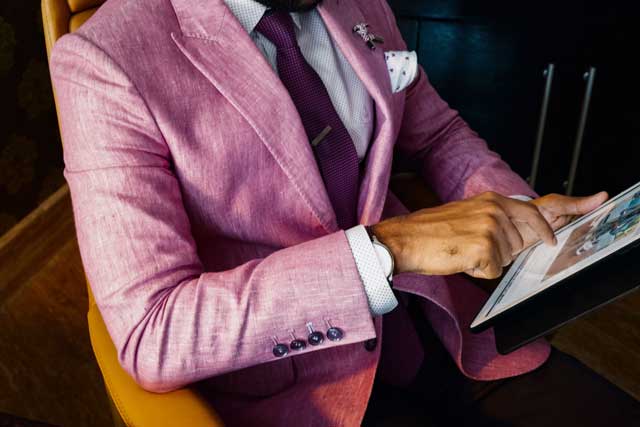
There are many trusted manufacturers that supply high end suiting fabrics. Most of them are based in Europe and have a centuries-old history of weaving such as Dormeuil, Scabal, Zegna or Holland & Sherry. All you need to do is choose.
What is the difference between made-to-measure and bespoke suits? The term made-to-measure means that there are base patterns, and they are slightly adjusted to fit a new customer’s frame. The term bespoke means that a new pattern is created for each wearer depending on his measurements.
Most Luxury Suit Fabrics
When we think about men’s suits, the first thing that comes to mind is worsted wool. The best kind is made using the fleece of the merino sheep which lives mainly in Australia and New Zealand. However, there are exclusive treatments that can influence the final price of the bolt.
E.g., modern manufacturers know how to produce Super 250’s wool. It’s the finest and silkiest type of worsted wool fabric, which is as delicate as you can imagine. It is a luxurious option for special occasion suits that one is going to wear on rare events only.
No less great are the fabrics with 24 karat gold and platinum, lapis lazuli, diamond chip, or orchid essence offered by Scabal. These noble collections created in Belgium redefine the very concept of men’s business wear. Durable and highly wearable, they are one level up compared to regular wool fabrics and really make a difference when it comes to status.
If you’re aiming higher, there’s a true luxury suiting fabric to try – vicuña. The finest animal fiber in the world is a real treat for fashion connoisseurs. 100% vicuna fabrics are rare and uber expensive, but you can try various wool blends that contain this awesome fiber. Such fabrics are especially suitable for special occasion jackets.
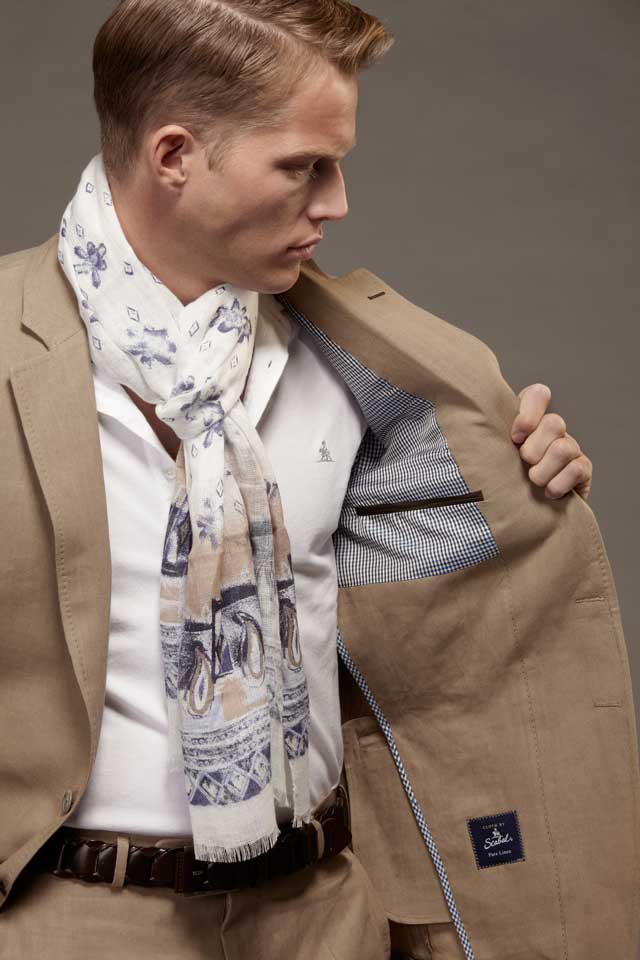
Suit Yourself, Everyone!
Whether you are a businessman, an office worker or a self-employed freelancer, you need to have at least one well-fitted suit in your closet. It can do wonders for your career and self-confidence. Worsted wool fabrics are among the most popular materials in menswear. France, Belgium, Italy and Great Britain have always been the top suppliers of quality wool fabrics. As soon as any of these countries appears on the label, we know for sure that we’re dealing with some of the best expressions of craftsmanship and skills.
The variety of men’s fabrics available today allows every man to find exactly what he needs in terms of weave, design, composition and drape. Classic black or navy blue for a business suit, bold plaid for club jackets, striped wool or cotton for a change – there are hundreds of ways to build and expand the wardrobe, and you just can’t have enough.
Suiting Fabrics at Tissura
Tissura is the place where you can buy online suiting fabrics created by the most renowned European manufacturers for any taste and occasion. From classic Super 100's worsted wool for everyday use to extrafine Super 250's intended for high-level events, from cosy merino to precious cashmere and rare vicuña — our assortment offers the most exclusive wool. To get an impression of the range of suiting fabrics, check out the fabrics below. To see our entire collection of suiting fabrics, click on the button underneath them:
Worsted wool fabric, 160 (198 US$) per one running metre;
Worsted wool fabric, 106 € (132 US$) per one running metre;
Worsted wool fabric, 98 € (122 US$) per one running metre;
Worsted wool fabric, 238 € (295 US$) per one running metre
How to stay cool on a hot summer day? Wear fabrics built for the heat. Cotton, linen, viscose, silk – there are dozens of summer-friendly materials you can choose for your wardrobe. The best fabric to opt for when the temperature rises should be breathable and comfortable.
The wedding dress is one of the most important clothing items a woman gets to choose in her lifetime. It can be made of silk or cotton, lace or tulle, be strewn with sequins or embroidered with beads.
.jpg)
.jpg)
.jpg)
.jpg)
